 |
Jun Allard Cells are nanometer-scale problem-solving machines. The broad goal of the Allard group is to understand how components inside cells push, pull, bend and flow together, and how this helps cells perform tasks and exploit problem-solving strategies. We use mathematical and computational modeling, in collaboration with experimentalists at UC Irvine and around the world. Our primary focus is the cell-cell interface that dynamically forms between immune cells (T cells) and other cells, where forces and stresses on surface molecules have been demonstrated to affect immunological decision-making. The mathematical models we develop involve stochastic partial differential equations and allow us to use experimentally accessible information, like fluorescence intensities, to infer mechanical information like the tension on receptors and ligands |
 |
Ioan Andricioaei Theoretical and computational topics at the interface between structural molecular biology and physical chemistry. We apply numerical simulations and modeling methods to describe biologically important molecular processes in a variety of biological systems such as DNA-binding machines. |
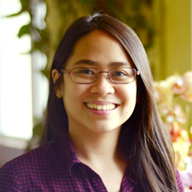 |
Herdeline Ann M. Ardoña The Ardoña Research Group works at the interface of chemistry, engineering, and biology. Our team develops biologically relevant materials with functional properties that allow for 1) influencing the behavior of cells or tissues; 2) dynamic response to external biological cues, or 3) sensing capabilities with optical or electronic readouts. By mimicking the properties of the native environment of cells and tissues, such as surface chemistry and mechanical properties, we aim to integrate these synthetic materials with biotic interfaces. Our overarching goal is to engineer in vitro models of electrosensitive tissues, such as the myocardium, using these designer materials with optoelectronic properties as building blocks. These models may then be applied for investigating disease-specific mechanisms and pharmacological/toxicological screening. |
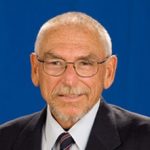 |
We study how light interacts with cells and their subcellular organelles. Using this knowledge, we study cell structure and function on the nanoscale and below level. |
 |
Carter T. Butts My group’s research centers on mathematical, computational, and statistical modeling of systems with complex patterns of dependence. We have a particularly strong focus in the area of networks, with an emphasis on sampling and network inference, network dynamics, models for graph populations, and exponential family random graph models (ERGMs). We also work on various problems in computational and Bayesian statistics, including Bayesian model integration for prediction of protein properties related to aggregation propensity and statistical models for protein chemical shifts. More broadly, we are interested in developing and applying Bayesian and/or network analytic methods to problems in physical, biological, or other settings that have not been studied using these techniques. |
 |
Stacy Copp Our research focuses on nanoscale photonic materials made of soft matter building blocks, biomimetic nanomaterials, and materials informatics approaches to nanoscience. |
 |
Robert Corn Our areas of research include the use of surface plasmon resonance to monitor biopolymer adsorption and the chemical modification of surfaces with self-assembled monolayers for the creation of adsorption-based biosensors |
 |
Michael Dennin We study systems that are driven out of equilibrium. Some of the questions focused on in his lab include: how do domains of patterns, such as stripes, evolve in time after a sudden change of an external driving force? Can we use fluctuations in probe particles to understand the response of biologically relevant networks to external stresses? More recently, our lab has begun projects in biological physics that consider the interaction between proteins and monolayers |
 |
Michelle Digman Our research interests focus on 1) quantifying spatial and temporal Rac 1A and Rho-A activation during cell migration, 2) characterizing metabolic alterations in cancer and degenerative diseased cells and tissues, 3) correlating mitochondrial transport with cancer cell invasion, 4) fine tuning cancer metabolism in response to matrix stiffness |
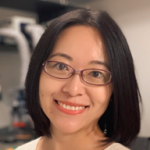 |
Fangyuan Ding Our lab is focused on quantitative single molecule RNA biology and engineering, emerging from basic single-cell research to tool developments for nucleic-acid based therapies. We aim to reveal the spatial and temporal information of single molecules in individual cells, and the dynamics and kinetics of single molecules at subnanometer resolution. |
 |
Nien-Hui Ge Our research program is directed to determine how molecular structures change in time, at equilibrium and during reactions. Topics of current interest include: the backbone and side chain conformation of peptides and proteins, kinetics of protein folding, and local structure and dynamics of liquids |
 |
Steven Gross The big question my lab addresses is that of protein function: from the recent progress in molecular biology, we either know or will know the entire genomes of many organisms. Thus, we will be able to predict all of the proteins in those organisms. So, how do these proteins function to achieve the desired biological activity? Many different tools are needed to adequately study this problem, so my lab is extraordinarily cross-disciplinary, using biophysical as well as genetic and biochemical approaches. |
 |
Zhibin Guan Our research program focuses on exploring new concepts and strategies at the interfaces with catalysis and biology for the design of well-defined polymers, biomaterials, and nanomaterials. Our current research projects include: Polymer Architecture Design through Catalysis, Biomimetic Supramolecular Polymer Designs, New Biomaterials from Natural Building Blocks, and Self-assembly of Nano Objects into Superlattices |
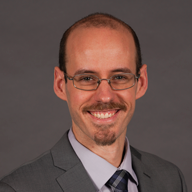 |
Ryan Hayes While there are many experimental and computational approaches to protein engineering and design, computational approaches typically suffer from low accuracy. This makes them dependent on high throughput experimental validation and optimization. Therefore, research in the Hayes group focuses on improving the accuracy of computational protein design to enable more efficient use of experimental resources. |
 |
Allon Hochbaum We are interested in living materials and biological-inorganic interfaces to address pressing issues in global energy demand and human health. We specialize in the synthesis of bioinspired and biomimetic materials, and study the chemical, physical and electrochemical interactions between microbes and materials. |
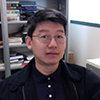 |
Ray Luo Our group has been focusing on theoretical and algorithmic developments for modeling solvation-mediated energetics and dynamics of biomolecules. In addition, we are developing new classical force field models for both reduced and all-atom representations of biomolecules with or without the inclusion of electronic polarization. Finally, we are also utilizing our computational models to study a wide range of biomolecules important to biosynthesis, Alzheimer’s disease, virology, and cancer biology. |
 |
Marc Madou Miniaturization science (MEMS and NEMS) with emphasis on chemical and biological applications. Current projects include polymer actuators (for drug delivery), C-MEMS and CD based fluidics. Besides miniaturization techniques and materials choices, scaling laws are considered. |
 |
Rachel Martin Locally ordered protein networks are biomaterials that have significant short-range order but lack long-range crystallinity. Although these materials are difficult to study because of their compositional heterogeneity, they are central to many interesting biophysical questions. We develop and use modern solid-state NMR methods to investigate biologically relevant protein networks using the 800 MHz NMR spectrometer at UC Irvine. |
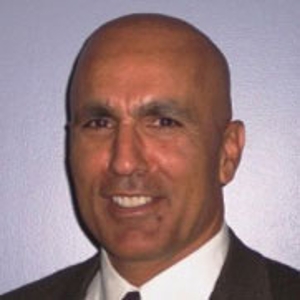 |
Sabee Molloi Spectral breast CT, Myocardial blood flow measurement using CT and its applications to coronary artery disease; Pulmonary blood flow measurement using CT and its applications to lung disease; Quantification of myocardial mass at risk, and Detection of ischemic stroke using dual energy CT. |
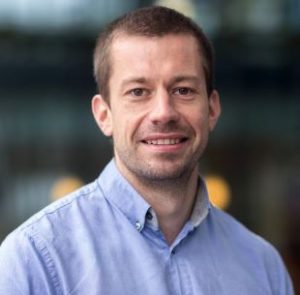 |
Joe Patterson Soft materials are ubiquitous in science, nature, and technology. Their defining characteristic is a structural sensitivity towards their environment due to the molecular energy of the systems being on the order of thermal energy. As materials scientists we exploit this sensitivity, using processes such as self-assembly, to create complex materials that find applications in nanomedicine, catalysis, and energy storage or conversion. The Patterson Lab uses advanced electron microscopy techniques to explore the nanoscale dynamic processes which are essential to soft matter formation and application. Through visualization and quantitative analysis of these processes we aim to drive advancements in soft matter research and create the next generation of functional nanomaterials. |
 |
Eric Potma We employ multimodal nonlinear microscopy tools (CARS/SHG/TPEF) to quantitatively image biological tissues and structures. We are also interested in characterizing the nonlinear optical properties of nanostructures. The third order optical response of nano-compounds is explored by detecting the coherent anti-Stokes electronic signatures of such systems. We use focus-engineered CARS techniques to improve contrast in nonlinear microscopy. |
 |
Peter Rentzepis Picosecond time-resolved x-ray diffraction and EXFAS experiments allow our group to determine the structures of ultra short-lived intermediates in chemical and biological reactions in liquids, while subpicosecond kinetics experiments allow us to probe non-linear phenomena of molecules used for 3D optical storage and electronic switching |
 |
Thorsten Ritz Our group focuses on relating the geometrical structure of molecules, proteins, and protein assemblies to their biological functions. In our pursuit, we are guided by the realization that all biological function ultimately relies on the laws of physics properly harnessed by biological assemblies of atoms. Physical modeling of proteins, as well as the interactions between proteins, furnishes unique insights that complement those gained by comparative or experimental approaches. |
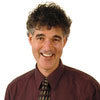 |
A. J. Shaka Our main interest is in improving NMR techniques and applying them to high field solution experiments from small molecules to very large proteins. We collaborate with structural biologists, organic chemists, crystallographers, and theorists in the search for improved methods to identify and characterize molecular structure and dynamics in solution. |
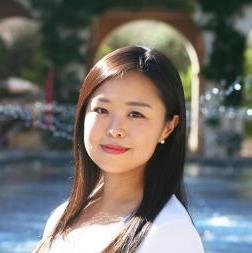 |
Seunghyun Sim Our program focuses on the development of living biomaterials by integrating synthetic biology (genetic engineering) with synthetic soft materials (molecular engineering). In recent years, a myriad of genetically encoded biological modalities useful for therapeutics, imaging, sensing, and communication over various length scales have been discovered and engineered in the fields of molecular and synthetic biology. We will develop 3D-printed living composite materials (LCM) comprising immobilized, yet metabolically active, living microbial cells that perform engineered tasks. We will develop (1) LCMs producing and eluting therapeutic biomolecules in situ, as living drug delivery system, (2) microfluidic LCM devices for facile and reusable detection of biomarkers, and (3) a novel soft robotic system using controllable mechanical actuation and reconfiguration of LCMs. |
 |
Albert Siryaporn We explore the dynamics of living organisms, with a focus on how mechanical forces regulate biological processes in bacteria. Bacteria encounter a variety of mechanical forces in natural environments and during infection including shear stress, tension, and compression forces. We use an approach that combines techniques from biophysics, molecular biology, genetics, fluid mechanics, and computational modeling. |
 |
Douglas Tobias Our research involves using atomic-scale computer simulation techniques based on classical and quantum mechanics to study the structure and dynamics of biological molecules and biomimetic materials, and aqueous interfaces with air that are important in atmospheric chemical processes. A substantial portion of our work is devoted to the development, implementation, and optimization of novel simulation methodology and analysis tools. |
 |
Vasan Venugopalan Our research focuses on laser-induced thermal, mechanical and radiative transport processes for application in medical diagnostics, therapeutics, biotechnology, and micro-electro-mechanical systems (MEMS) |
 |
Szu-Wen Wang One of the current challenges in biomaterials research is the design and fabrication of functional nanostructures at progressively smaller length scales. Since biology has been enormously successful in assembling complex nanoscale systems, research in my group couples the principles of self-assembly with nature-inspired macromolecular systems to engineer new materials and therapeutic strategies. The research group is currently investigating (1) the fabrication of inorganic nanoarrays using biological templates, (2) the design of nanoscale protein complexes for molecular transport of molecules, and (3) the development of novel biopolymers for drug delivery. |
 |
Clare Yu In collaboration with biologists, I study the biophysics of the transportation system inside a living cell as well as questions in developmental biology using Monte Carlo computer simulations. |
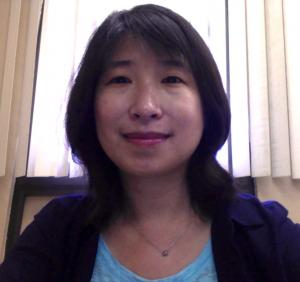 |
Jin Yu Our researches have been focused on revealing physical mechanisms underlying protein complexes and machinery. By utilizing computational biophysics approaches, including a spectrum of molecular modeling and simulation techniques, statistical mechanics, and stochastic methods, we aim at providing insights that would help us to better understand physics of living systems, and also enabling artificial redesign of biomolecular systems for a variety of purposes in bio-medical researches. |
